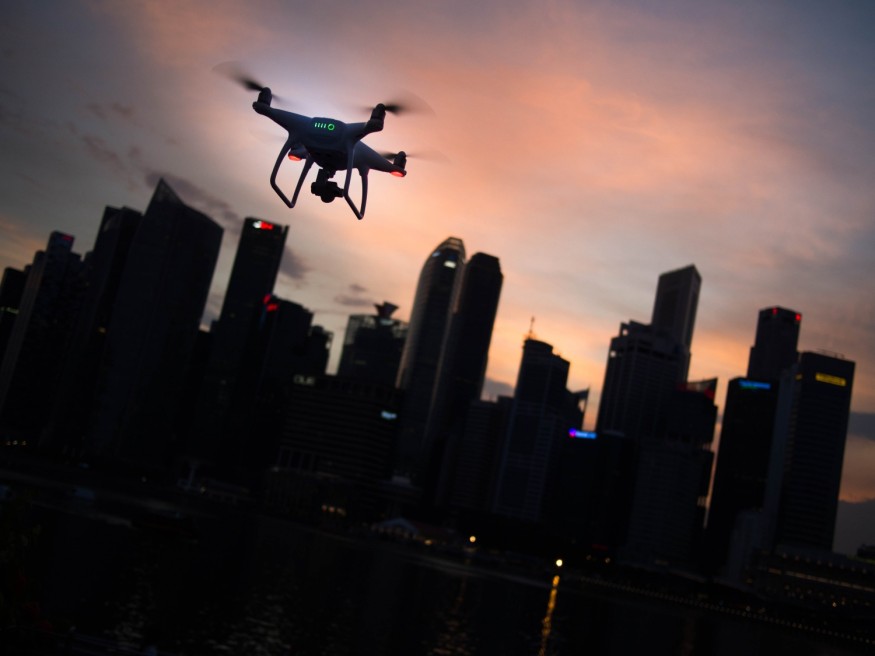Since August, dozens of 'Iranian suicide drones' have been flying over Ukrainian land.
These weapons are referred to as Shahed, a term that in the Islamic culture may mean both the act of becoming a martyr as well as "witness of faith."
However, El Pais said that the Kremlin's new preferred weapon in its invasion of Ukraine is a drone.
What Are Shahed-136 Drones?
Unmanned aerial vehicles (UAVs), commonly referred to as drones or unmanned combat aerial vehicles (UCAVs), have been employed in battle since World War II.
UAVs are autonomously piloted aircraft that are used for surveillance and reconnaissance. They can also make attacks on specific targets, drop or fire their own weapons, or take other direct action on the battlefield.
The Russian military has reportedly been employing drones produced in Iran to launch strikes distant from the front while being driven back on the battlefield.
The Shahed-136 drone is a member of the class of drones known as "loitering munitions" sometimes referred to as "kamikaze" or "suicide" drones. They are able to loiter near the target until told to attack, at which point they fly into a target and set off an explosive payload.
The state-owned Iran Aircraft Manufacturing Company is said to be the manufacturer of the 200kg Shahed-136, which has a wingspan of 2.5 meters and has been in service since 2021, according to the military weapon cataloging website Military Factory.
The drones' deployment raises the "realistic possibility that Russia is attempting to use the system to conduct tactical strikes rather than against more strategic targets farther into Ukrainian territory" according to the UK Ministry of Defence, which claims the drones have a range of 2,500 kilometers.
A drone that is "conceptually a hybrid between an unmanned aircraft and a cruise missile" the Shahed-136 is "expected to be prized more for the sheer firepower a fleet of them can bring to bear with high precision and at a low cost" according to another website.

Shahed-136 Drones: How It Works
Drones have been deployed in battle by both Russia and Ukraine, employing lingering weapons.
According to CNN, the Russian military has utilized Russian-made Orlan-10 drones for electronic warfare and surveillance while Ukraine has used Turkish-built Bayraktar UAVs to target Russian command posts, tanks, and surface-to-air missile systems.
The Wall Street Journal added that the Russian company Kalashnikov Group has created a homegrown drone known as Kub-Bla, while Ukraine is using Warmate and Switchblade drones built in Poland and the US as well as other locally made UAVs.
The number of drones has decreased on both sides of the conflict as there is no sign of a resolution. Iran has denied involvement, although according to Ukraine and the US, the existence of Shahed-136 drones implies Iran's involvement.
General Dominique Trinquand, a former commander of the French military mission to the United Nations, was quoted by France24 News as saying that Russia's supply of high-tech equipment was "very low" and that replacing it would be challenging because many of its components originated in the West.
According to Forbes, Russia has been able to cause "cheap" by using the "real damage" Shahed-136 since they can be purchased and utilized in greater quantities and only cost US$20,000 each. In comparison, the 84 missiles that Russia launched on October 10 cost between an estimated $300,000 and US$13 million each.
When Did Russia Start Using Them?
A Russian group reportedly visited an airstrip in central Iran at least twice in June to look at drones that may carry weapons. According to CNN, which cited a US official, Russian authorities started practicing with the drones in August.
A Shahed-136 was downed by Ukraine on September 13.
The drone was given the new designation Geran-2 (Geranium-2 in English) by the Russian army, according to the Armed Forces of Ukraine Facebook page. Images posted by a Ukrainian officer show drone debris with a tail fin and the Cyrillic inscription "Geran-2"
Since then, other assaults in Ukraine have utilized the Shahed-136, most recently on October 10.
RELATED ARTICLE : Can You Survive Nuclear War? Here's Where You Should Hide in the US
Check out more news and information on Weapons in Science Times.












